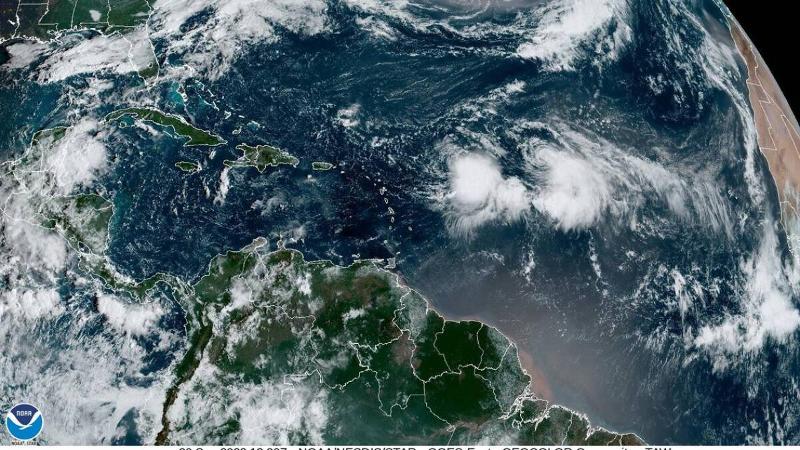The Earth's atmosphere is heating up, and scientists are uncovering the ways in which hurricanes and storms are changing as a result. In this article, we delve into the latest research that suggests climate change is causing stronger hurricanes to form earlier in the season. We'll explore the global trends, the impact on storm intensity, and the potential consequences for flood risks. Join me, John Green, as we unravel the complex relationship between climate change and hurricanes.
The Impact of Climate Change on Hurricane Season
Explore how climate change is affecting the timing and intensity of hurricane seasons worldwide.
Climate change is causing significant shifts in the timing and intensity of hurricane seasons. Research shows that Category 4 and 5 hurricanes are occurring about 15 days earlier than in the 1980s. This earlier onset of storms coincides with the rainy season, increasing the risk of devastating floods. Additionally, rapid intensification, where storms strengthen rapidly, is now happening about two weeks earlier in the season.
These changes have global implications, with the western North Pacific experiencing the strongest pattern of earlier and more intense storms. However, the impact on the Atlantic basin, which includes the Caribbean and the U.S. East and Gulf coasts, is less apparent. The unique characteristics of the Atlantic basin, combined with other factors such as reduced air pollution, make it challenging to isolate the specific effects of climate change.
Understanding the Factors Behind Earlier Storm Formation
Delve into the factors contributing to the earlier formation of stronger hurricanes.
Several factors contribute to the earlier formation of stronger hurricanes. One key factor is the warming of the Earth's atmosphere due to climate change. Warmer temperatures provide the energy needed for storm development and intensification. Additionally, changes in atmospheric circulation patterns and sea surface temperatures play a role in the earlier onset of storms.
However, it's important to note that while climate change is a significant factor, other variables such as natural climate oscillations and regional weather patterns also influence storm formation. Scientists continue to study these complex interactions to gain a comprehensive understanding of the factors driving earlier storm development.
Implications for Flood Risks and Coastal Communities
Examine the potential consequences of earlier and more intense storms on flood risks and coastal communities.
The earlier formation of stronger hurricanes increases the likelihood of severe flooding, particularly in regions where storm seasons coincide with the rainy season. The combination of heavy rainfall and powerful storms can lead to widespread flooding, posing significant risks to coastal communities.
Coastal areas are particularly vulnerable to the impacts of stronger hurricanes, with increased risks of storm surge and erosion. These events can result in extensive property damage, displacement of residents, and disruptions to critical infrastructure. It is crucial for coastal communities to adapt and implement effective mitigation strategies to minimize the potential impacts of these storms.
Conclusion
Climate change is causing significant shifts in the timing and intensity of hurricane seasons, with Category 4 and 5 hurricanes occurring about 15 days earlier than in the past. This earlier onset of storms increases the risk of devastating floods, particularly in regions where storm seasons align with the rainy season. While the impact of climate change on the Atlantic basin is less apparent, the western North Pacific is experiencing a stronger pattern of earlier and more intense storms.
Understanding the factors behind earlier storm formation is crucial in developing effective strategies to mitigate the potential impacts. Warmer temperatures, changes in atmospheric circulation patterns, and sea surface temperatures all contribute to the earlier formation of stronger hurricanes. However, it's important to consider the complex interactions of these factors with natural climate oscillations and regional weather patterns.
The implications of stronger hurricanes on flood risks and coastal communities are significant. The combination of heavy rainfall and powerful storms increases the likelihood of severe flooding, posing risks to coastal areas. Coastal communities must adapt and implement effective mitigation strategies to minimize property damage, displacement of residents, and disruptions to critical infrastructure.
FQA
What is causing the earlier formation of stronger hurricanes?
The earlier formation of stronger hurricanes is primarily caused by climate change, which leads to warmer temperatures, changes in atmospheric circulation patterns, and sea surface temperature changes. However, other factors such as natural climate oscillations and regional weather patterns also influence storm formation.
What are the potential consequences of earlier and more intense storms?
Earlier and more intense storms increase the risk of severe flooding, particularly in regions where storm seasons coincide with the rainy season. Coastal communities are particularly vulnerable to storm surge, erosion, and property damage. Effective mitigation strategies are essential to minimize the impacts on coastal communities.
How can coastal communities adapt to the impacts of stronger hurricanes?
Coastal communities can adapt to the impacts of stronger hurricanes by implementing effective mitigation strategies. These strategies may include coastal protection measures, improved infrastructure resilience, and land-use planning that considers the risks associated with storm surge and flooding.

